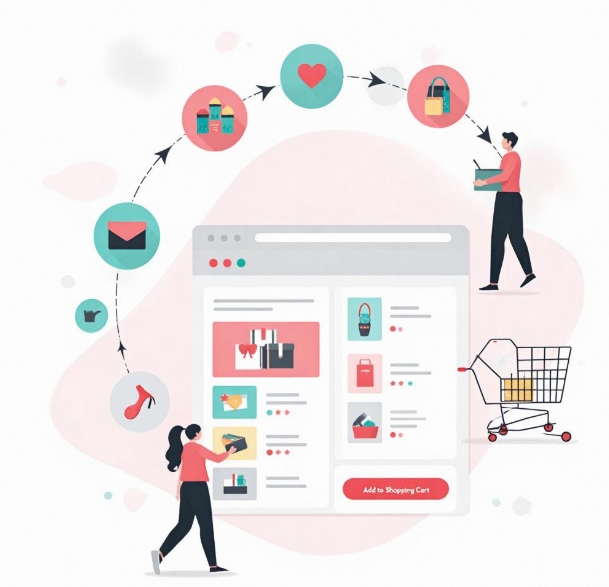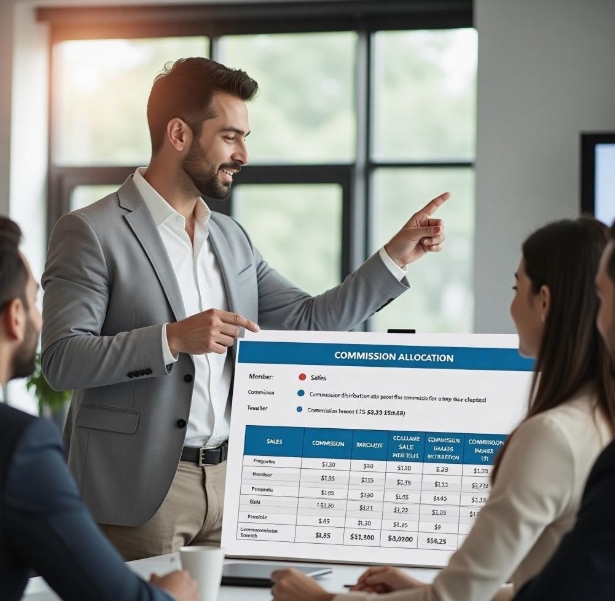Shenzhen Community Group Buying Mall Development (Group Leader Commission System)
- latest articles
- 1.DApp Development & Customization: Merging Diverse Market Needs with User Experience 2.Analysis of the Core Technical System in DApp Project Development 3.How to achieve cross-chain interoperability in Web3 projects? 4.How does the tokenization of points reconstruct the e-commerce ecosystem? 5.How to Set and Track Data Metrics for a Points Mall? 6.What is DApp Development? Core Concepts and Technical Analysis 7.Inventory of commonly used Web3 development tools and usage tips 8.Development of a Distribution System Integrated with Social E-commerce 9.Six Key Steps for Businesses to Build a Points Mall System 10.What is DApp Development? A Comprehensive Guide from Concept to Implementation
- Popular Articles
- 1.Future Trends and Technology Predictions for APP Development in 2025 2.Analysis of the DeFi Ecosystem: How Developers Can Participate in Decentralized Finance Innovation 3.From Zero to One: How PI Mall Revolutionizes the Traditional E-commerce Model 4.DAPP Development | Best Practices for Professional Customization and Rapid Launch 5.Recommended by the Web3 developer community: the most noteworthy forums and resources 6.From Cloud Computing to Computing Power Leasing: Building a Flexible and Scalable Computing Resource Platform 7.How to Develop a Successful Douyin Mini Program: Technical Architecture and Best Practices 8.Shared Bike System APP: The Convenient Choice in the Era of Smart Travel 9.How to Create a Successful Dating App: From Needs Analysis to User Experience Design 10.From Design to Development: The Complete Process of Bringing an APP Idea to Life
With the rapid development of internet technology, especially the widespread adoption of mobile internet, the community group buying model has quickly emerged in major Chinese cities, becoming a new form of e-commerce. Particularly in Shenzhen, a city known for its technological innovation and highly developed e-commerce, the development of community group buying platforms presents unique market demands and technical challenges. The group leader commission system, as a key component of community group buying, not only enhances the efficiency of group buying activities but also incentivizes group leaders to actively participate and attract more users to join.
In this article, we will explore the development process of Shenzhen's community group buying platforms, focusing on the design and implementation of the group leader commission system. We will analyze its impact on platform operations, user experience, and business models, and share practical considerations from real-world applications.
1. Overview of the Community Group Buying Model
Community group buying is a model that organizes consumers to purchase goods on-demand at discounted prices through online platforms or social media channels. The core of group buying is "group purchasing," where multiple consumers join together to buy the same product, leveraging bulk purchasing to enjoy lower prices than individual purchases.
In metropolitan areas like Shenzhen, the community group buying model has gradually expanded across various sectors, covering everything from daily necessities to fresh produce. As the demand for convenient shopping and low-priced goods continues to grow, community group buying has become an extremely popular e-commerce model.
2. The Importance of the Group Leader Commission System
In the operation of community group buying platforms, group leaders play a crucial role. Typically, group leaders are organizers and leaders within a community or social group who guide users in group buying activities through social media platforms, WeChat groups, and other channels. The group leader commission system serves as a way to motivate group leaders and ensure the smooth operation of the platform.
The group leader commission system is not merely a simple profit-sharing model; it directly impacts the platform's profitability, user retention, and merchant sales growth. An effective commission system encourages group leaders to attract more users to participate in group buying, thereby driving user growth and engagement on the platform.
2.1 Basic Principles of the Group Leader Commission System
The core principle of the group leader commission system is to allocate commissions based on factors such as the sales volume generated by the group leader and the number of users they refer, according to a predetermined ratio. Typically, the commission distribution method can be adjusted based on different business needs. Common commission models include:
Sales-Based Commission: Group leaders earn a percentage of the total sales they generate. The higher the sales, the more commission the group leader receives.
User-Based Commission: Commissions are allocated based on the number of new users the group leader brings in. This approach focuses more on driving user growth.
Tiered Commission System: For multi-level group leaders, commissions are distributed according to different tiers. This method is similar to multi-level marketing and can incentivize group leaders to recruit subordinate leaders.
2.2 Key Design Considerations for the Group Leader Commission System
When designing the group leader commission system, developers need to consider the following key elements:
Transparent Commission Rules: The group leader commission system must be transparent. Users should be able to clearly see their sales data, earned commissions, and the rules for commission calculation. Ambiguous rules should be avoided to prevent dissatisfaction among group leaders.
Commission Settlement Cycle: To ensure group leaders receive their commissions in a timely manner, the platform should set a reasonable settlement cycle. Generally, settlement cycles can be weekly or monthly, depending on the platform's operational situation.
Flexibility in Commission Calculation: The platform needs to be able to flexibly set commission rates based on different product categories, group leader levels, and sales strategies. For example, higher commission rates can be set for high-profit items to incentivize group leaders, while lower rates can be set for basic goods.
Anti-Cheating Mechanisms: Since the group leader commission system directly impacts the platform's revenue, the platform must design effective anti-cheating mechanisms, such as detecting fake transactions and fake users.
3. Development Steps for a Community Group Buying Platform
Developing a comprehensive community group buying platform in Shenzhen is not a simple task. It requires not only advanced technical support but also precise market positioning and an excellent operational model. Below are the general steps for developing a community group buying platform.
3.1 Market Demand Analysis and Positioning
First, developers need to conduct market research to analyze the shopping needs, consumption habits, and acceptance of community group buying among consumers in the current Shenzhen market. Through research data, they can identify the target user base and determine the products, services, and features the platform needs to offer.
At the same time, developers should analyze competitors to understand the strengths and weaknesses of existing community group buying platforms in the market, thereby identifying entry points and ensuring the new platform's competitive differentiation.
3.2 Platform Function Design
Based on market demand analysis, the platform needs to design features that meet user needs. A complete community group buying platform typically includes the following basic functions:
Product Display and Categorization: Provide clear product categories, allowing users to easily browse and search for products.
Group Buying Function: Users can initiate group purchases or join existing ones to enjoy lower prices.
Group Leader Management System: Includes functions such as commission distribution, team management, and task assignment to help group leaders efficiently operate their group buying teams.
User Reviews and Feedback: Encourage users to review products and their group buying experience after purchases, enhancing the platform's credibility and user retention.
Payment and Logistics System: Ensure a simple and secure payment process and timely logistics delivery to meet users' shopping needs.
Backend Management System: Platform operators can manage products, orders, commission settlements, and more through the backend.
3.3 Technical Architecture and Platform Setup
Developing a community group buying platform requires selecting an appropriate technical architecture. Common technology stacks include frontend frameworks like Vue.js or React, backend technologies such as Java Spring or Node.js, and databases like MySQL or MongoDB. The platform also needs to consider performance optimization for high concurrency to ensure system stability and smooth operation.
3.4 User Experience Design
To enhance the user experience, the platform's UI design should be simple and user-friendly. User workflows, especially the shopping process, should be streamlined to ensure users can quickly complete their purchases from selection to payment.
3.5 Data Analysis and Operations
Through data analysis, the platform can monitor group leader performance, user purchasing habits, and product popularity. Using this data, the operations team can continuously optimize group buying strategies, offer personalized recommendations, and increase the platform's sales.
4. Optimization and Development of the Group Leader Commission System
As the market continues to evolve, the group leader commission system also needs constant optimization and upgrades. Here are several directions for improvement:
Intelligent Commission Allocation: Leveraging big data and AI algorithms, the platform can dynamically adjust commission rates based on group leader performance, user behavior, and other factors to incentivize high-performing group leaders.
Cross-Platform Incentive Mechanisms: With the rise of platforms like WeChat Mini Programs and Douyin, the group leader commission system can be integrated across platforms to attract more users from social media to participate in group buying.
Group Leader Training and Community Building: By providing training and resource support to group leaders, their sales capabilities and community management skills can be enhanced, leading to more efficient group buying activities.
5. Conclusion
As a pioneering city in China's reform and opening-up, the development of community group buying platforms in Shenzhen represents not only the integration of technology and market but also the embodiment of business model innovation. The group leader commission system plays a vital role in this model, not only incentivizing group leaders to attract more users to participate in group buying but also promoting the platform's growth and sustainable development. As the community group buying market continues to evolve, the group leader commission system will gradually become more intelligent and diversified, serving as a reference for other e-commerce platforms.
By carefully designing the group leader commission system and developing a community group buying platform with an excellent user experience, entrepreneurs and developers in Shenzhen have the potential to stand out in this opportunity-rich market.
-

How does the tokenization of points reconstruct the e-commerce ecosystem?
With the continuous advancement of internet technology and the gradual prolifera···
-

How to Set and Track Data Metrics for a Points Mall?
With the rapid development of the e-commerce industry, points malls, as a common···
-

Development of a Distribution System Integrated with Social E-commerce
With the rapid development of internet technology, the e-commerce industry has e···

 Blockchain
Blockchain












